We had some fun recently during a site visit to identify the presence of a historic agricultural district for a solar project…
*Cue Sir David Attenborough’s voice*
Here we are searching for the elusive historic agricultural district. Often impossible to find, we are hoping to get a glimpse of it today, as whispers of its appearance have been heard. What vast expanses of agricultural land use and lack of modern residential development, perhaps we will get a sighting after all. But what is this that appears on the horizon? Large modern grain bins indicative of monocropping, followed by farmsteads lacking historic barns? Ah well, it would appear the earlier rumors of a visit from that elusive beast, the historic agricultural district, have been unfounded. Perhaps when we return to the hunt tomorrow, we may catch a glimpse.
Historic Agricultural District
All joking aside, the historic agricultural district is a type of cultural resource that can be difficult to identify and document due to its size and complexity. Along with farms and farmsteads, the historic agricultural district was listed as a property type in the Agricultural Resources of Pennsylvania, 1700-1960 Multiple Property Documentation Form (MPDF), also known as the Agricultural Context. The context identifies and describes the different types of historic agricultural resources, systems, and regions found throughout the Commonwealth and discusses how they can be eligible for listing in the National Register of Historic Places (National Register).
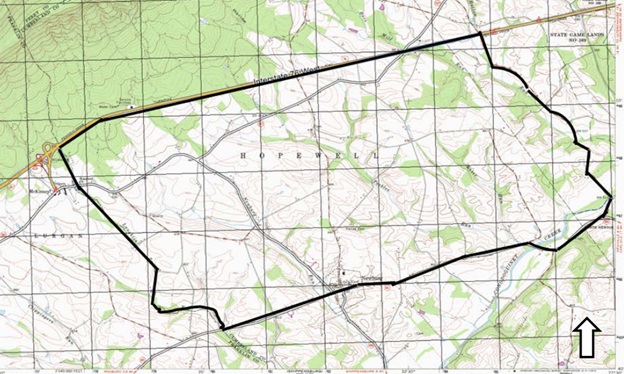
The Hopewell Township Historic Agricultural District (Resource # 2017RE00643) in Cumberland County includes over 7,300 acres of agricultural lands. The Pennsylvania Turnpike forms the northern boundary of the district.
A historic agricultural district includes contiguous farmsteads that share visual, landscape, and architectural characteristics that date to and are typical of the period of significance and were connected by historic transportation systems. There is generally an emphasis on the area being set apart from its surroundings as a distinctive entity with agricultural viewsheds uninterrupted by modern development.

View of the Reistville Area Historic Agricultural District (Resource # 2023RE05903) in Lebanon County, showing pattern of farmsteads and continued agricultural land use.
Given their large geographic area and multiple properties involved, historic agricultural districts are treated differently from farms and farmsteads in National Register eligibility assessments. Not all farms need to be individually eligible for listing in the National Register of Historic Places. Rather, the district’s eligibility derives from the collective character of the whole. The agricultural landscape should remain consistent with historic field patterns, tree lines, and connections between farmsteads, and sufficient built environment should remain to convey historic agricultural use.
Focus on Integrity
While the Agricultural Context recognized the historic agricultural district as a property type, it did not provide much guidance. As a result of a multi-year effort with PennDOT, the PA SHPO has released guidance on the identification, documentation, and evaluation of historic agricultural districts. Given the size of a historic agricultural district, from a practical standpoint it makes sense to examine integrity first to see if a landscape retains those physical features that can convey agricultural significance.
Desktop Review
An examination of an area for historic agricultural district potential begins with a desktop review. Current aerial photographs and Google Streetview can be useful in determining if an area remains largely agricultural in nature, with farm complexes evenly distributed across an agricultural landscape. County land use and tax parcel mapping can also establish agricultural use. In cases where the majority of land is no longer used for agriculture, it will usually be obvious that a historic agricultural district is not present from a desktop review.

Tax parcel mapping of the Turbotville and Limestoneville Historic Agricultural District (Resource # 2022RE01378) in Northumberland County showing retention of large parcels of land.
Compare Historic and Current Aerials
If a cursory review shows the potential for an agricultural landscape, a careful comparison of past and present-day aerials can show changes to or retention of landscape features including the pattern of fields, spacing of farm complexes, and circulation network.
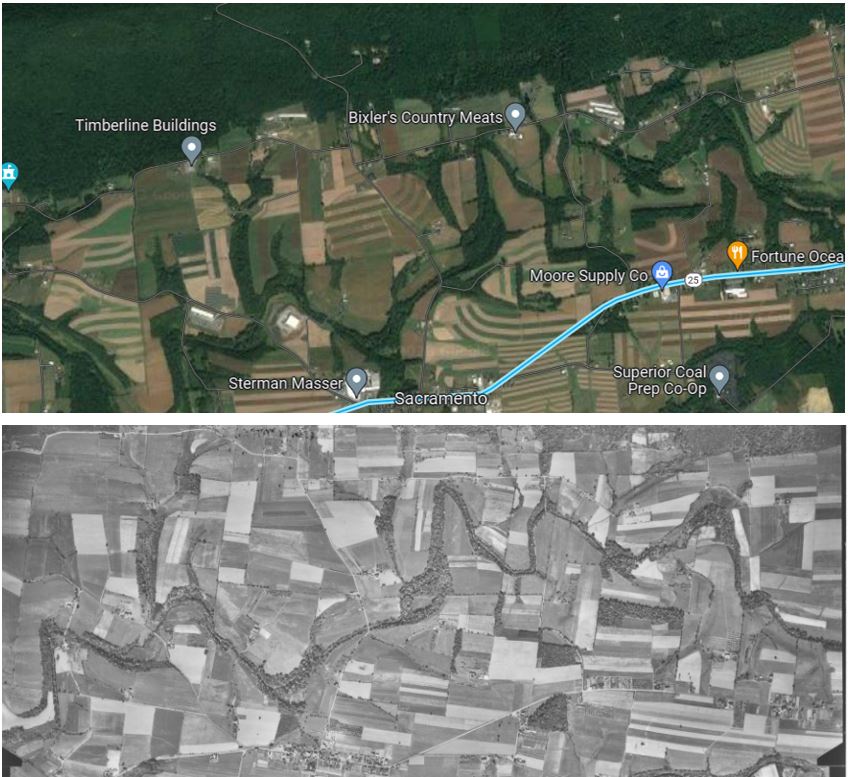
Comparison of 2023 and 1953 aerial mapping in Lykens Valley Rural Historic District (Resource # 1998RE01399) in Dauphin County showing modern farming practices. The 120-foot-wide strips span former farm fields to accommodate a grain and potato crop rotation associated with Sterman Masser, the East Coast’s largest potato grower.
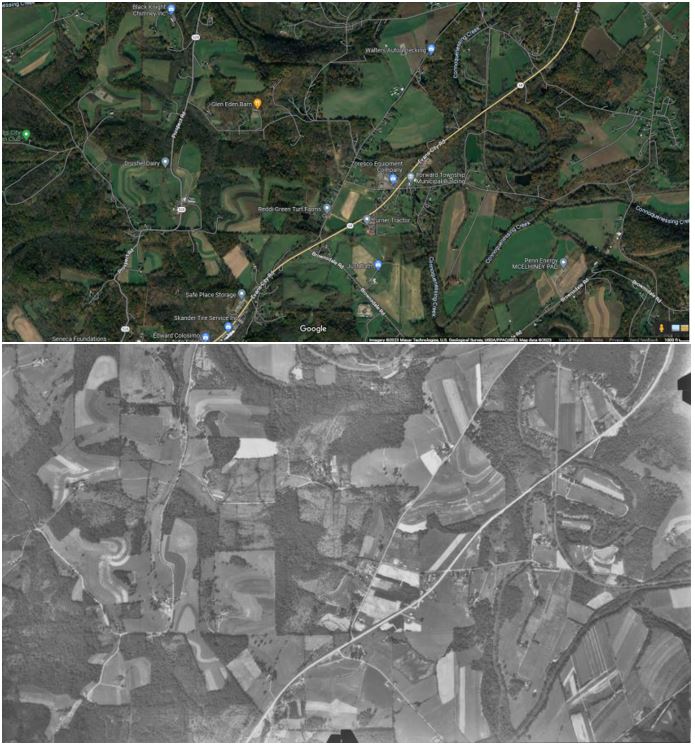
Comparison of 2023 and 1967 aerial mapping in Conoquenessing Creek and Glade Run Historic Agricultural District (Resource # 2023RE06651) in Butler County. Note areas of former farmland are now covered in trees and some residential development, resulting in loss of agricultural lands.
Additional Research
If a comparison of historic and current aerials reveals landscape patterns remain, then additional research is necessary. An examination of the Agricultural Context will reveal agricultural trends and the associated built environment and landscape features for the relevant region that are necessary to convey significance. Nineteenth century and PennDOT Type 10 county mapping show historic locations of services that supported area farmers such as mills, stores, school, and churches, often in village centers. Area histories are also useful to understanding the evolution and development of the landscape.
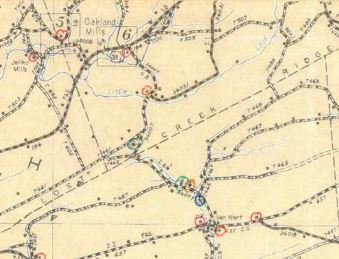
An examination of historic PennDOT Type 10 roadway mapping can be useful for identifying the historic location of supporting services. This mapping in the East Juniata Historic Agricultural District (Resource # 2023RE07447) in Juniata County shows the location of grist mills (red), schools (orange), churches and cemeteries (green), stores (pink), and saw mills (blue).
Site Visit
A site visit is useful for confirming the integrity of the landscape and if it can convey agriculture trends over time. It allows for the determination of the function and age of buildings in the farm complexes and if buildings may have been abandoned, altered, or even replaced with new dwellings and barns. A site visit also establishes if historic supporting services remain. If a district is determined to exist, the site visit can be useful to delineating potential boundaries.
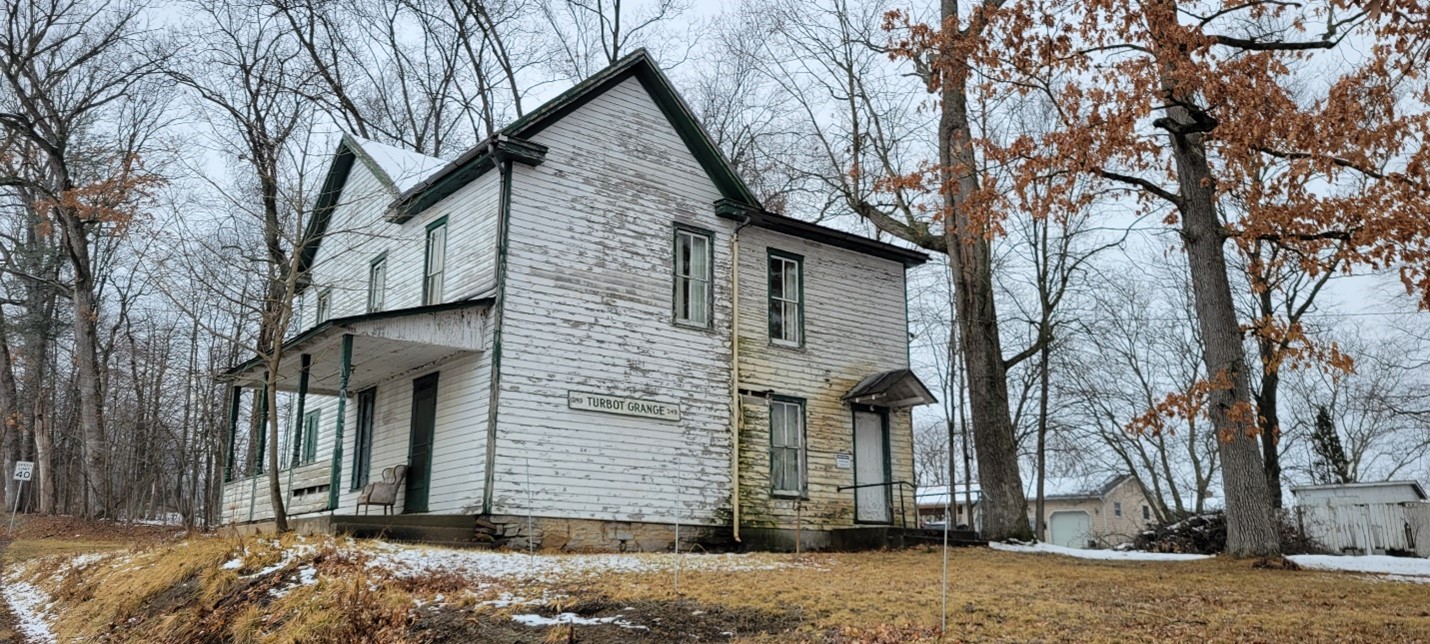
The former Turbot Grange No. 249 was identified during the site visit to the Turbotville and Limestoneville Historic Agricultural District (Resource # 2022RE01378).
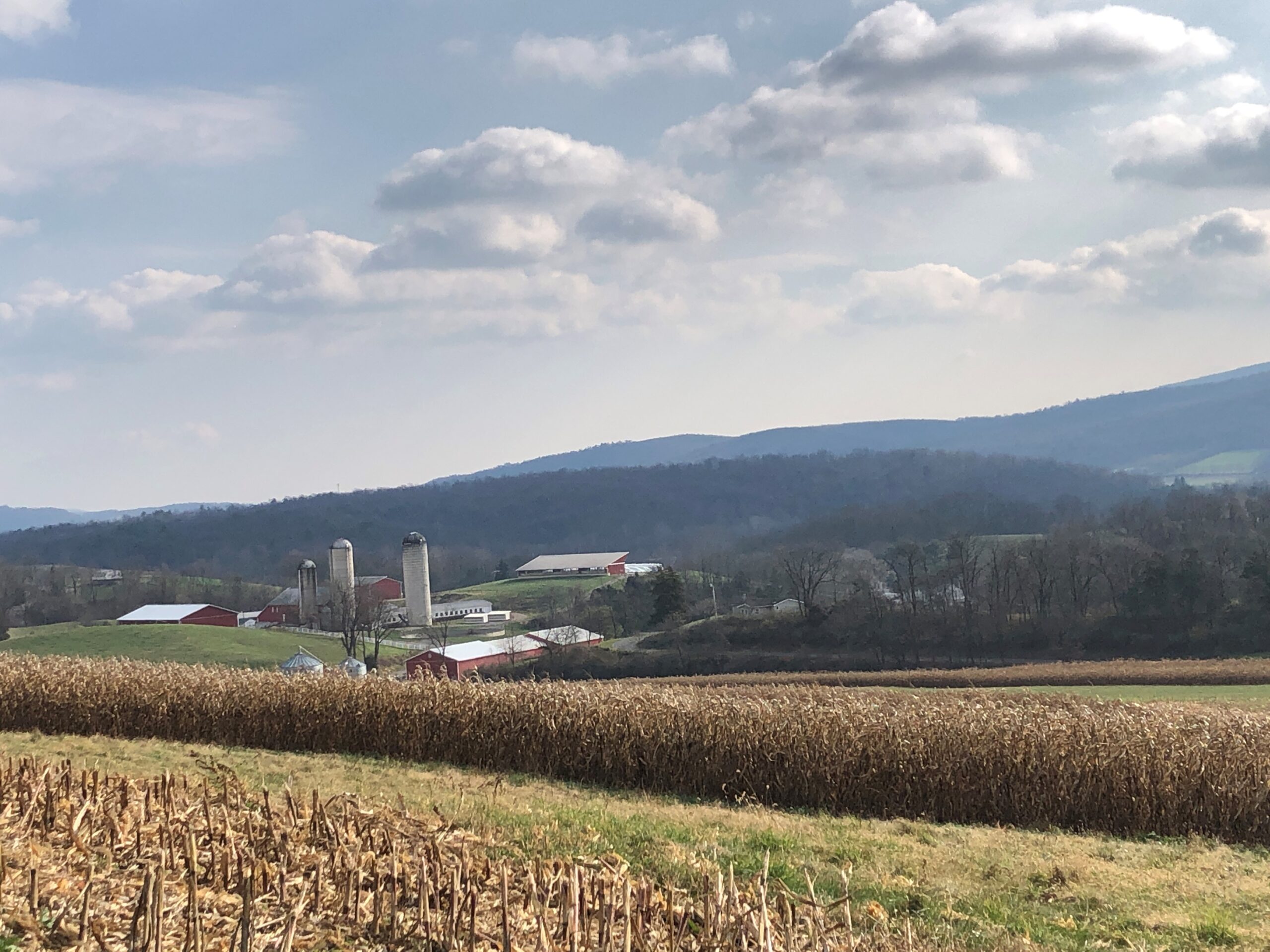
A site visit to the Western Shermans Creek Valley Historic Agricultural District (Resource # 1999RE01479) in Perry County revealed the loss of historic buildings on farmsteads and the presence of numerous modern buildings associated with agriculture, affecting the integrity of the landscape.
Documentation
The final step in the process is documentation. The documentation should focus on visual illustrations and a discussion of how the area conveys those trends and patterns in agriculture identified in the Agricultural Context. A worksheet outlining the types of changes commonly made to historic agricultural landscapes accompanies the guidance and is useful in determining level of integrity through the presence or absence of landscape features. Examples of documentation for past historic agricultural districts have been provided in the newly released guidance.
Happy hunting!
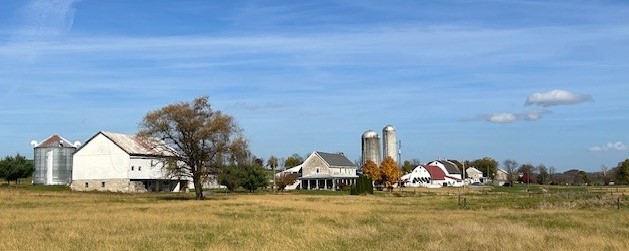
Very helpful and informative update on the identification of agricultural historic districts. thanks for including the link to the PennDot Type 10 county maps.